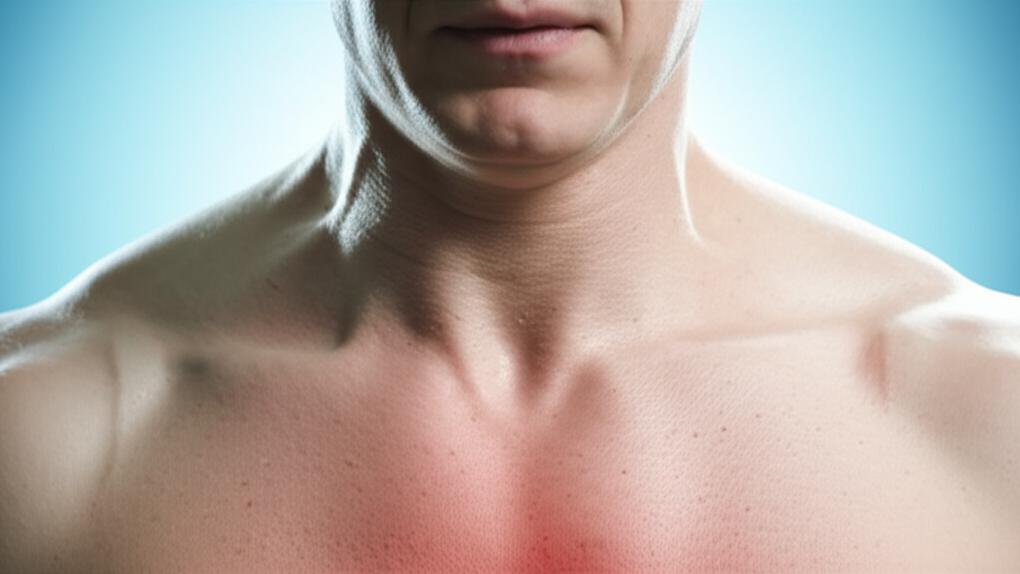Imagine your heart, that tireless worker, suddenly finding itself in a tight spot. Not a metaphorical one, but a literal squeeze. That’s what we’re talking about with cardiac tamponade. It’s a serious situation where the sac around your heart, called the pericardium, fills up with too much fluid – maybe blood, maybe something else – and starts putting serious pressure on your heart. This pressure means your heart’s chambers can’t fill up with blood properly. And if they can’t fill, they can’t pump enough blood out to your body. It’s a bit like trying to blow up a balloon inside a too-small box.
This is a condition I always take very seriously in my practice because, without quick action, it can be life-threatening. When your heart can’t pump effectively, your blood pressure can drop, and your heart might try to compensate by beating really fast – over 100 beats a minute sometimes.
What’s Going On In There?
So, your heart sits inside this two-layered sac, the pericardium. Normally, there’s a small amount of fluid between these layers, just enough to let the heart move smoothly. But with cardiac tamponade, that space fills up with too much fluid. Think of it as a pericardial effusion – that’s the medical term for fluid building up in the pericardium – that’s gone a step too far and is now causing a problem for the heart itself.
Now, not every pericardial effusion leads to cardiac tamponade. If the fluid builds up slowly, the pericardium can sometimes stretch, a bit like a slowly inflating water balloon. It might not even cause symptoms right away. But cardiac tamponade is when that fluid puts so much pressure on the heart that it just can’t do its job.
It’s not incredibly common, thankfully, affecting about 2 out of every 10,000 people, often as a result of other medical issues.
What Might You Feel? Recognizing Cardiac Tamponade Symptoms
The signs can come on fast, or they can creep up on you.
If it happens quickly, you might notice:
- Sharp pain in your chest. This pain can be a real bother, sometimes spreading to your arm, back, neck, or shoulder. It might even feel worse when you take a deep breath, lie down flat, or cough.
- Trouble breathing, or breathing very rapidly. Like you just can’t catch your breath.
- Feeling faint, dizzy, or lightheaded.
- Your skin might look different – pale, grayish, or even a bit blue.
- Heart palpitations, where you suddenly become very aware of your heart thumping away, maybe uncomfortably so.
- A really fast pulse.
- Feeling confused or agitated, just not yourself. This is what we call an altered mental status.
If the fluid builds up more slowly, the symptoms might be a bit more subtle at first:
- Just general shortness of breath.
- Swelling in your belly or your legs.
- Feeling incredibly tired, all the time.
- A dull ache or discomfort in your chest that often feels a bit better if you lean forward or sit up.
What Causes This Squeeze?
A whole range of things can lead to cardiac tamponade. It’s quite a list, actually:
- Blunt trauma, like from a car accident or a nasty fall.
- Penetrating trauma – think a stab wound.
- An aortic dissection, which is a tear in the main artery coming from your heart. Serious stuff.
- Advanced cancer.
- A heart attack.
- Infections like tuberculosis (TB).
- Inflammation or infection of the pericardium itself, something we call pericarditis.
- Chronic immune diseases like lupus, rheumatoid arthritis, or scleroderma.
- Rarely, heart cancer.
- Heart failure or kidney failure.
- An underactive thyroid, or hypothyroidism.
Sometimes, unfortunately, it can happen after a medical procedure:
- Surgery on or near your heart.
- Procedures using catheters (thin tubes) in your heart or nearby blood vessels.
- Getting a device like a pacemaker.
- Radiation therapy if it’s near your heart.
Who’s More Likely to Face This?
Certain conditions can make it more likely for that fluid to build up:
- Congestive heart failure.
- Having had heart surgery or those catheter-based procedures I mentioned.
- HIV.
- End-stage kidney disease.
- Autoimmune diseases.
- Cancer.
- Tuberculosis.
Why It’s So Serious: Potential Complications
This isn’t something to take lightly. Cardiac tamponade can lead to:
- Cardiogenic shock, where your heart suddenly can’t pump enough blood to meet your body’s needs.
- Heart failure.
- And, if not treated quickly, it can be fatal.
The danger is that it severely limits how much blood your heart can pump out (we call this cardiac output). Your body gets starved of blood and oxygen. Eventually, the heart can just stop, which is a cardiac arrest. Scary, right? That’s why getting help fast is so crucial.
Figuring Out What’s Happening: Cardiac Tamponade Diagnosis
When someone comes in with symptoms that make me suspect cardiac tamponade, the first thing we do is a thorough physical exam. This usually involves:
- Checking your pulse – is it fast, weak?
- Taking your blood pressure – is it low?
- Watching your breathing.
- Listening carefully to your heart and lung sounds. Sometimes, with cardiac tamponade, the heartbeats can sound distant or muffled.
- Checking for something called pulsus paradoxus. This is a fancy term for when your blood pressure drops more than usual every time you breathe in.
There’s a classic set of signs we doctors sometimes see, called Beck’s triad:
- Low blood pressure (hypotension).
- Bulging neck veins (because the blood is backing up).
- Those muffled or distant heart sounds I mentioned.
However, it’s important to know that only about 10% to 40% of people with cardiac tamponade actually show all three parts of Beck’s triad. So, we don’t rely on that alone.
Tests We Might Use
To get a clearer picture, we’ll likely turn to some tests:
- Echocardiogram (Echo): This is an ultrasound of your heart. It’s usually the best and quickest way to see the fluid and how it’s affecting your heart.
- Chest X-ray: Can sometimes show an enlarged heart shadow if there’s a lot of fluid.
- Computed tomography (CT) scan: Gives a more detailed look.
- Electrocardiogram (EKG or ECG): Looks at the electrical activity of your heart. It can show changes that suggest pressure on the heart.
- Heart catheterization: A more invasive test, usually done if other tests aren’t clear or if we need to measure pressures directly.
Getting Your Heart Back on Track: Treatment for Cardiac Tamponade
The main goal of treatment is to get that fluid out from around your heart, and quickly. The most common way to do this is a procedure called pericardiocentesis. This involves carefully inserting a needle into the pericardial sac to drain the excess fluid. It can provide immediate relief.
Sometimes, surgery is a better option, especially if:
- An injury caused the cardiac tamponade, and there might be damage that needs repairing.
- The fluid is hard to reach with a needle.
- We think it’s best to remove part or all of the pericardium (a pericardiectomy).
In really critical, life-or-death situations, like if the heart stops in the emergency room due to cardiac tamponade, the team might perform an emergency thoracotomy. This is a surgical opening of the chest, done right there at the bedside, to directly relieve the pressure.
Of course, we also need to treat whatever caused the cardiac tamponade in the first place. So, depending on the cause and the treatment you had, you might also get pain medications, antibiotics, or other medicines.
What About Treatment Side Effects?
Like any medical procedure, draining the fluid or surgery comes with some potential risks. We always discuss these thoroughly, but they can include:
- Bleeding.
- Injury to the heart chambers or nearby blood vessels.
- A collapsed lung (pneumothorax).
- Air getting into the pericardium (pneumopericardium).
- Rarely, a heart attack.
- Fluid in the lungs (pulmonary edema).
- Infection.
- Irregular heartbeats (arrhythmia).
- Injury to nearby organs like the liver, lungs, or stomach.
- In very rare cases, death.
We do everything we can to minimize these risks, of course.
Feeling Better and Looking Ahead
The good news is, once that extra fluid is removed, you should start to feel better pretty quickly. Often, a small drainage tube is left in place for a day or two to allow any remaining fluid to drain out. We’ll use echocardiograms to keep an eye on how much fluid is left and decide when it’s safe to remove the drain.
Your outlook is generally good if cardiac tamponade is treated promptly. Any delay, though, can make the prognosis more serious.
If an underlying disease caused the cardiac tamponade, how you manage that will be key to your long-term health. We’ll work with you on a plan for that.
Can We Stop Cardiac Tamponade Before It Starts?
That’s a tough one. Because it can be caused by so many different things – from injuries to diseases – it’s very hard to predict and prevent cardiac tamponade itself. However, if we know there’s a pericardial effusion building up, especially after an injury or if you have a condition known to cause it, then early detection and treatment of that effusion can sometimes prevent it from progressing to full-blown cardiac tamponade.
Living With It: Taking Care of Yourself
When you go home from the hospital, it’s really important to keep taking any medications we’ve prescribed. And please, don’t skip your follow-up appointments! Cardiac tamponade can sometimes happen again, so we need to keep an eye on things and manage the underlying cause.
You’ll likely have another echocardiogram about one or two weeks after your treatment, along with a visit to a cardiologist (a heart specialist).
If you had surgery, you’ll probably need to take it easy and avoid strenuous activity for a while as you heal. We’ll give you specific instructions.
When to Worry & See Us
Cardiac tamponade is a medical emergency. Full stop.
- If you have any injury to your chest, especially near your heart – whether it breaks the skin or not – get to an ER right away.
- If you’re recovering from cardiac tamponade and any of those symptoms start to come back, that’s another reason for an urgent trip to the ER.
- Also, if you’ve had pericardiocentesis or surgery and you see any signs of infection like fever, chills, or redness, swelling, pain, or warmth around the wound or needle site, head to the hospital.
Take-Home Message: Key Things to Remember About Cardiac Tamponade
This is a lot to take in, I know. Here are the main points:
- Cardiac tamponade is a serious condition where fluid presses on your heart, making it hard for it to pump.
- It needs urgent medical attention. Don’t wait.
- Symptoms can include chest pain, shortness of breath, dizziness, and a rapid pulse.
- Diagnosis often involves an echocardiogram and other heart tests.
- Treatment usually means draining the fluid with a procedure like pericardiocentesis or, sometimes, surgery.
- The outlook is generally good with prompt treatment of cardiac tamponade.
- Always follow up with your doctor and report any returning symptoms or signs of infection.
A Final Thought
Hearing about conditions like cardiac tamponade can be unsettling, I understand. But knowing the signs and understanding that quick help is available can make all the difference. You’re not alone in this, and we’re here to help you through it.


